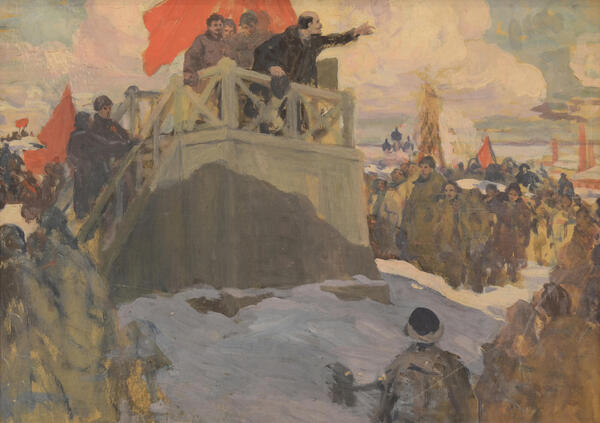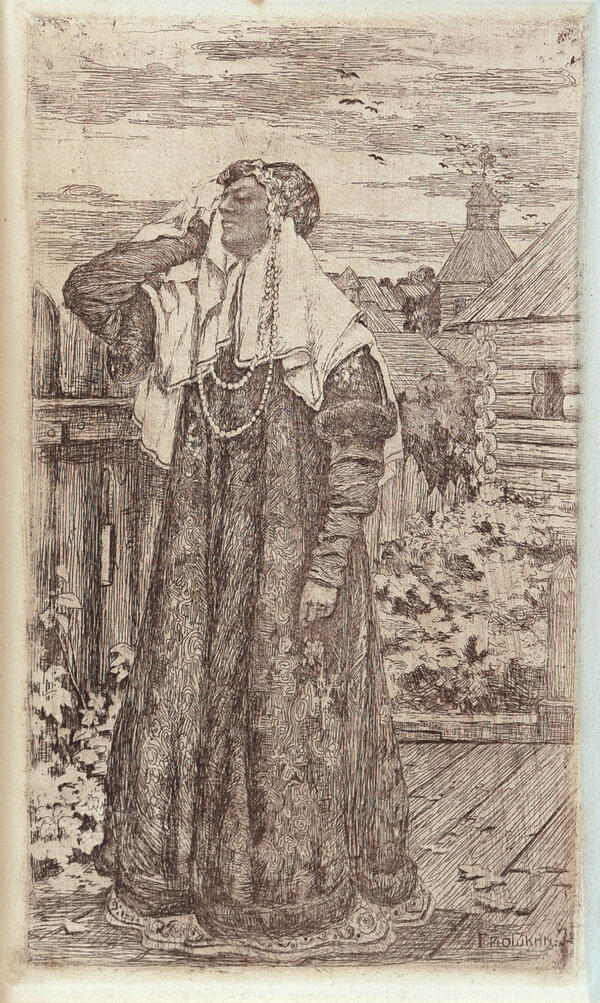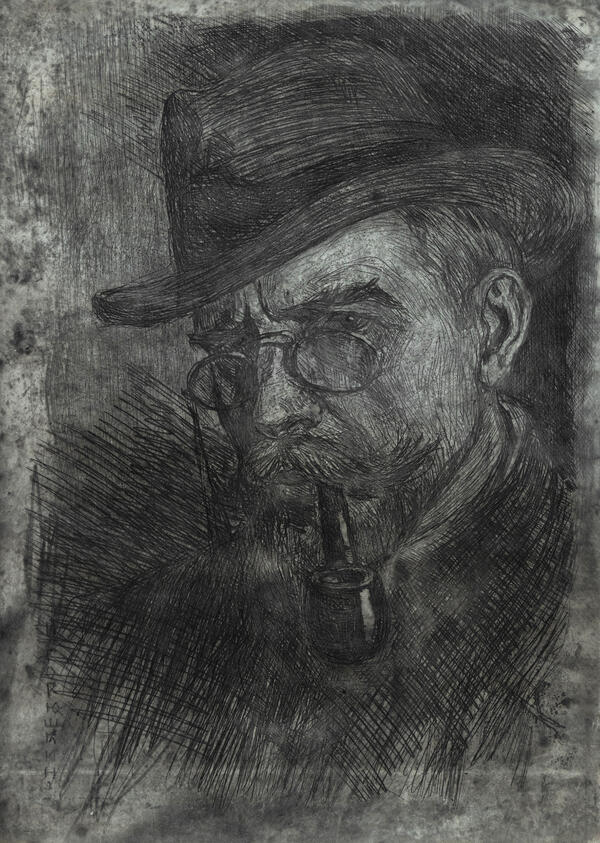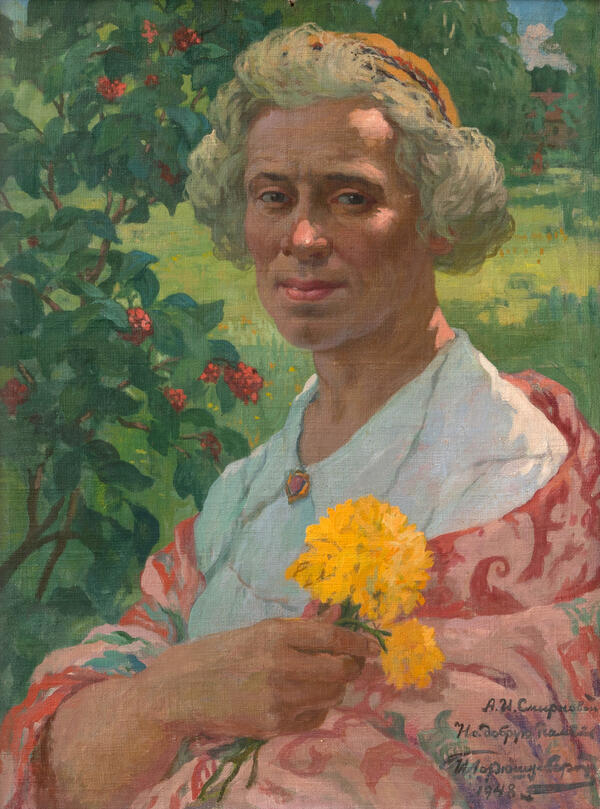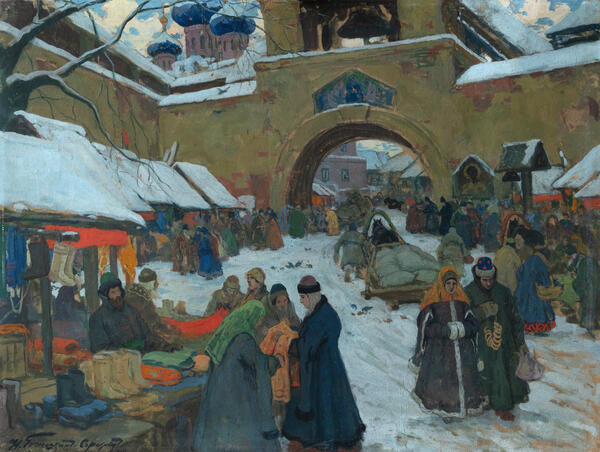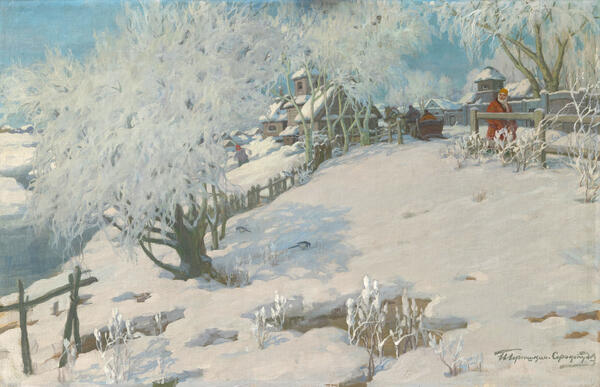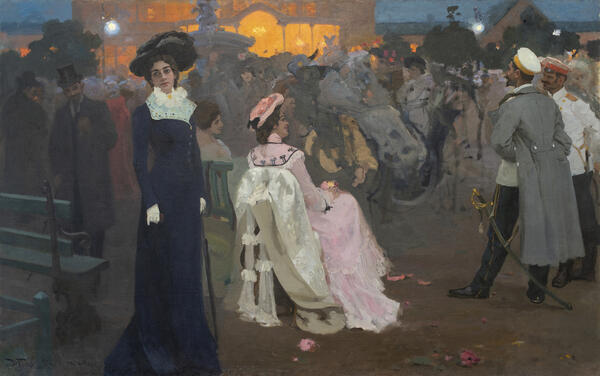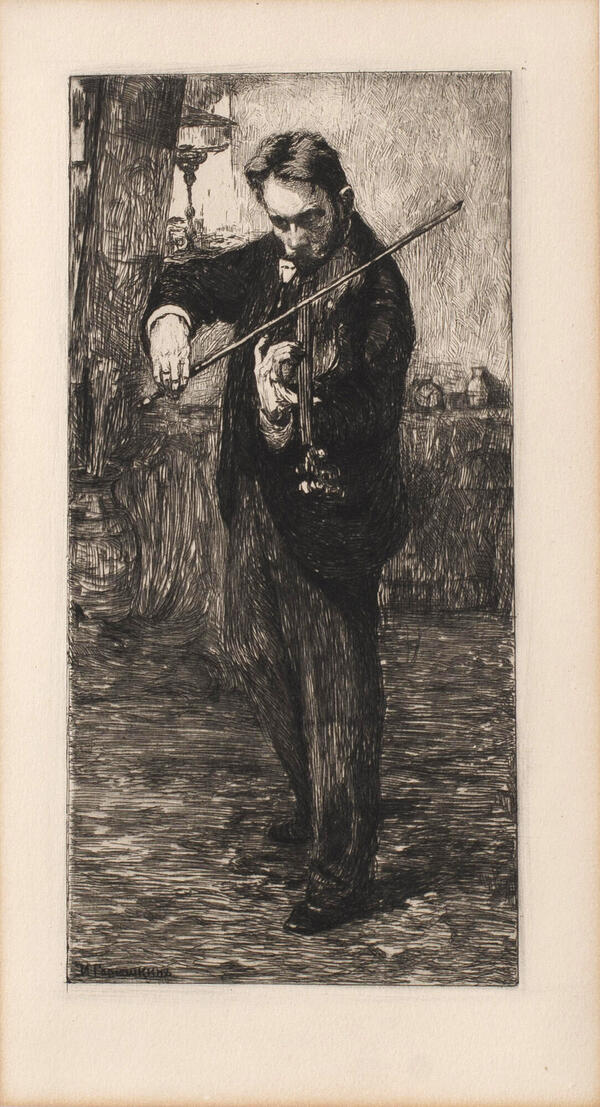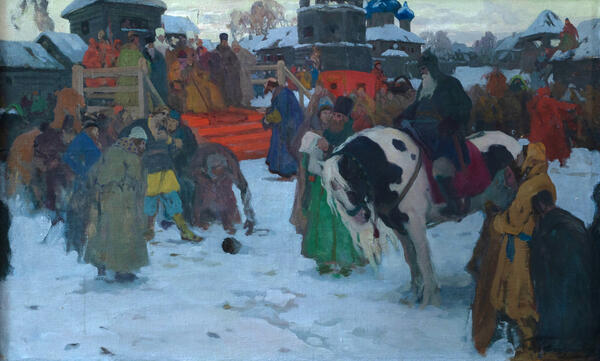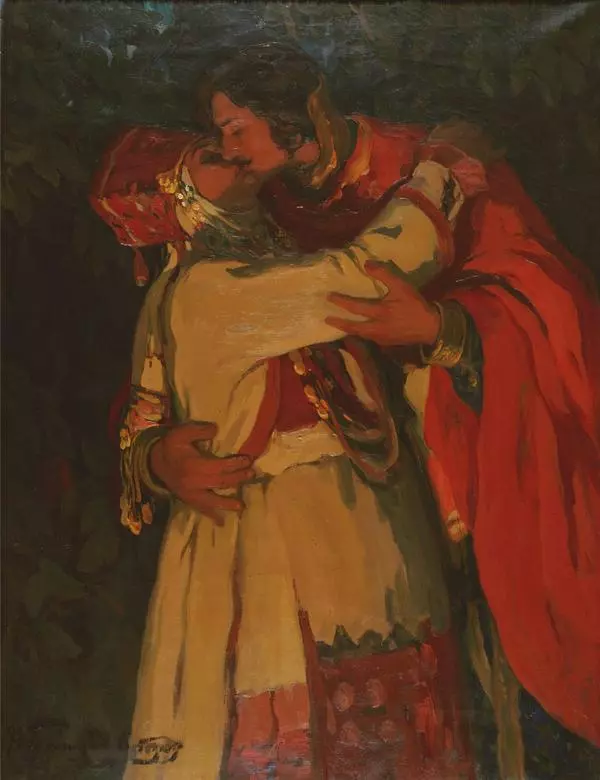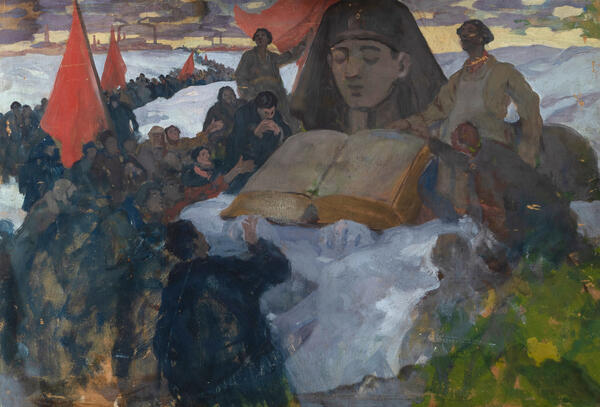Ivan Silych Goryushkin-Sorokopudov (1873–1954) was a Russian painter and Honored Artist of the RSFSR who contributed greatly to the cultural heritage of the Penza region. A son of a barge hauler, he enrolled at the Imperial Academy of Arts in St. Petersburg in 1897. He studied under the guidance of the battle painter Pavel Osipovich Kovalevsky, the xylographer and etcher Vasily Vasilyevich Mate, and in the workshop of the painter Ilya Efimovich Repin.
Ivan Goryushkin-Sorokopudov spent most of his life in Penza. He moved to the city in 1908 and worked there throughout his life. During the Great Patriotic War, he served as the director of both the Penza Art School and the Penza Art Gallery.
From the very beginning of his artistic career, he remained faithful to the realistic traditions in art, exploring and celebrating the unique features of Russian life and nature. His students largely followed in his footsteps. Ivan Goryushkin-Sorokopudov dedicated more than four decades to teaching at the Penza Art College. He nurtured several generations of artists, including the Armenian painter Gabriel Mikayeli Gyurjyan and the Bashkir artist Viktor Andreyevich Pozdnov.
Although the painter and graphic artist lived far from the capital, his works were widely known. His drawings and reproductions of his paintings were published in various magazines. His illustrations attracted attention, including his works for “Prince Serebrenni” by Aleksey Konstantinovich Tolstoy, “In the Forests” by Pavel Ivanovich Melnikov-Pechersky, and “Incurable” and “At the Inn” by Gleb Ivanovich Uspensky. His illustrations accompanying these literary works were printed in various pre-revolutionary magazines, including “Niva” (Grainfield) and “Solntse Rossii” (The Sun of Russia).
Paintings and graphics by Ivan
Goryushkin-Sorokopudov are exhibited in museums all across Russia. In his
works, he celebrated “the dimly remembered world”, the Russia of the past. Ivan
Goryushkin-Sorokopudov created this self-portrait around the 1920s. He depicted
himself as a teacher, which is reflected by the stern gaze from behind glasses
and his clothes — a shirt and tie.

